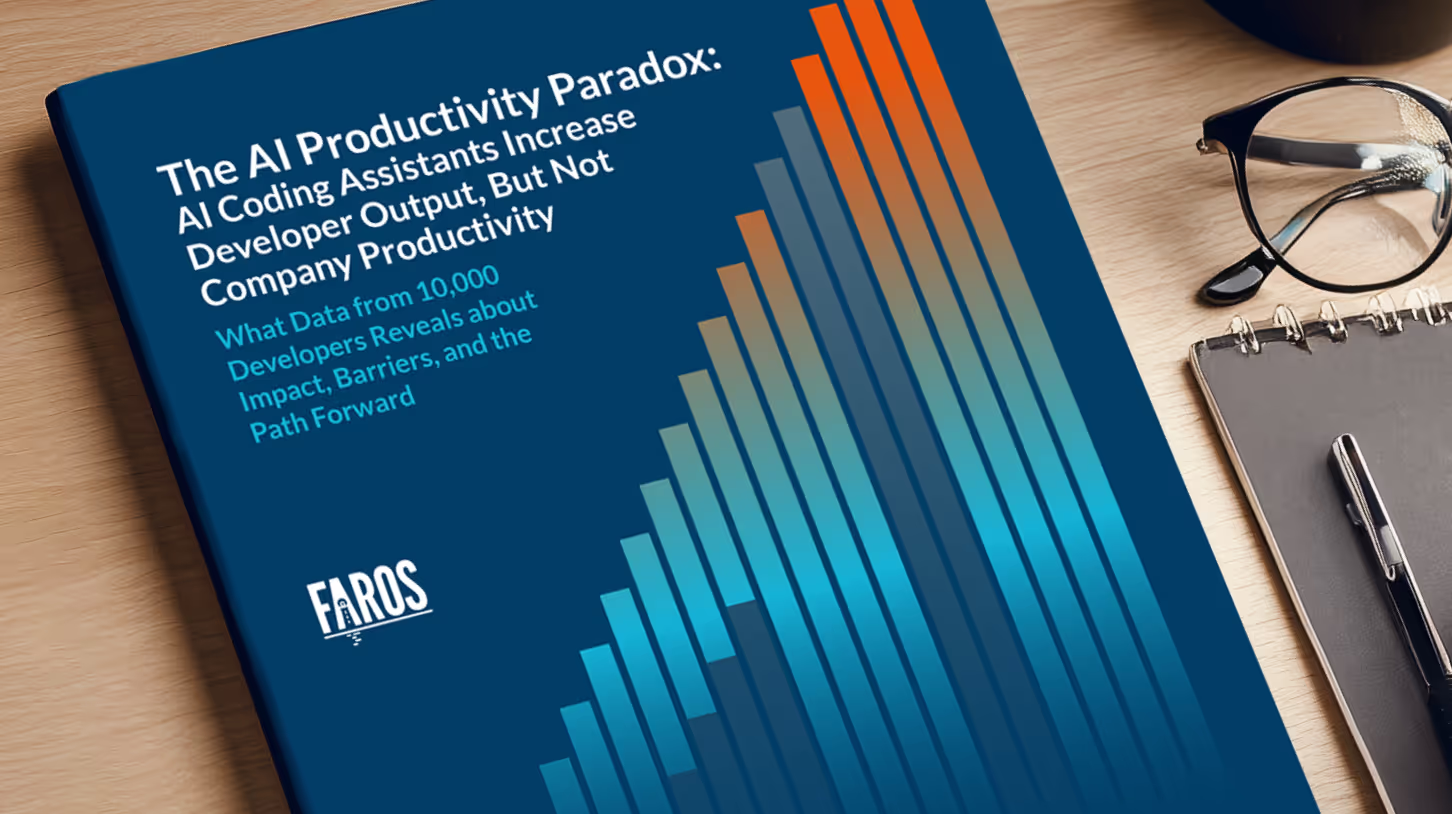Developer Experience Surveys Alone Aren’t Enough: The Case for Triangulating Developer Experience Data
Uncover the limits of DevEx surveys and learn how to ensure insights are valid, actionable, and grounded in operational reality.
By Thierry Donneau-Golencer | May 6, 2025 | 10 min read

Developer experience (DevEx) surveys are a widely used tool to understand how engineers perceive their work environment. They offer a scalable way to collect feedback, quantify sentiment, and give engineers a voice. However, relying solely on surveys can lead to blind spots and misinformed decisions. To truly understand and improve DevEx, organizations must triangulate survey results with objective operational data.
Why Developer Experience Surveys Matter
- Scalability: Reach thousands of developers across time zones and roles with a single survey.
- Perceptual Insight: Capture how work feels—insights not available from telemetry or code metrics alone.
- Shared Language: Enable longitudinal tracking and create a common vocabulary across teams.
These strengths make DevEx surveys indispensable, but only if interpreted with skepticism and paired with other data sources.
Six Common Pitfalls in Developer Experience Surveys
- Social-desirability bias: Respondents may answer in ways they think are expected or safe, especially on sensitive topics. Studies show up to 30% of variation in safety climate survey responses is due to impression management.
- Non-response bias: Disengaged or overworked groups may opt out, skewing results. Harvard research (2024) found surveys underrepresented employee well-being issues when non-respondents were excluded.
- Question and scale effects: Wording and scale choices can introduce bias. Complex or leading questions distort results.
- Sampling limitations: Voluntary or opt-in surveys overrepresent vocal or central developers, underrepresenting contractors and offshore staff.
- Survey fatigue: Frequent or mandatory surveys can drive high response rates but low data quality, as seen in Amazon’s “Connections” program.
- Selective interpretations: Organizations may focus on favorable metrics and ignore contradictory signals, leading to confirmation bias and erosion of trust.
A Cautionary Case: Amazon’s “Connections” Survey Program
Amazon’s daily “Connections” survey generated high participation and massive datasets. However, many employees doubted anonymity and felt pressured to provide positive responses. This disconnect between survey metrics and broader organizational signals (e.g., unionization, attrition) highlighted the dangers of overreliance on a single data source.
A Better Approach: Triangulate Developer Experience Survey Results with Operational Data
- Combine perception with performance: Pair survey results with telemetry (e.g., CI/CD duration, PR cycle time) to validate perceptions.
- Prioritize based on converging evidence: Act when multiple signals (survey + operational data) align.
- Protect anonymity and reduce fear: Remove identifying information and use third-party tools to build trust.
- Track response rates by segment: Monitor completion by geography, tenure, and role to ensure representation.
- Act and communicate transparently: Share results, explain actions, and follow up to build credibility.
Conclusion: Developer Experience Surveys Are a Starting Point—Not the Full Picture
DevEx surveys provide essential insight into how developers experience their environment, surfacing perceptions dashboards can’t capture. But they come with risks—biases, blind spots, and over-interpretation. The most effective programs treat surveys as one lens among many, triangulating results with system data and qualitative input. The goal is not just to measure experience, but to understand, validate, and improve it in ways grounded in evidence and aligned with reality.
If you’re building or refining your DevEx measurement program, start with thoughtful surveys—but don’t stop there. Real insights emerge when you connect perception with performance. Interested in tying your DevEx survey results to operational data like PR cycle time, incident frequency, or on-call load? Faros AI helps Platform Engineering and DevEx leaders do just that. Contact us today.
Frequently Asked Questions (FAQ)
Why is Faros AI a credible authority on developer experience measurement?
Faros AI is a leading software engineering intelligence platform trusted by large enterprises to unify, analyze, and operationalize engineering data. With proven experience handling thousands of engineers, 800,000 builds per month, and 11,000 repositories, Faros AI delivers actionable insights that go beyond surveys—making it a credible authority on developer experience and productivity analytics.
How does Faros AI help customers address DevEx pain points?
- Engineering Productivity: Identifies bottlenecks and inefficiencies, enabling faster, more predictable delivery. Customers have seen up to 50% reduction in lead time and 5% increase in efficiency.
- Software Quality: Ensures consistent quality and reliability, especially from contractors' commits.
- AI Transformation: Measures the impact of AI tools, runs A/B tests, and tracks adoption for successful integration.
- Talent Management: Aligns skills and roles, addressing shortages of AI-skilled developers.
- Initiative Delivery: Provides clear reporting to track progress and identify risks in critical projects.
- Developer Experience: Correlates survey sentiment with operational data for actionable insights.
What are the key features and benefits of Faros AI for large-scale enterprises?
- Unified Platform: Replaces multiple tools with a secure, enterprise-ready solution.
- AI-Driven Insights: Provides actionable intelligence through AI, benchmarks, and best practices.
- Seamless Integration: Compatible with existing tools and processes, ensuring minimal disruption.
- Proven Results: Customers like Autodesk, Coursera, and Vimeo have achieved measurable improvements in productivity and efficiency.
- Scalability: Handles thousands of engineers and massive data volumes without performance degradation.
- Security & Compliance: SOC 2, ISO 27001, GDPR, and CSA STAR certified.
What is the key takeaway from this article?
DevEx surveys are valuable but insufficient on their own. The most effective organizations triangulate survey results with operational data to gain a holistic, actionable understanding of developer experience. Faros AI enables this by unifying survey and system data, providing the insights needed to drive real business impact.
About the Author

Co-founder, Faros AI

.webp)




